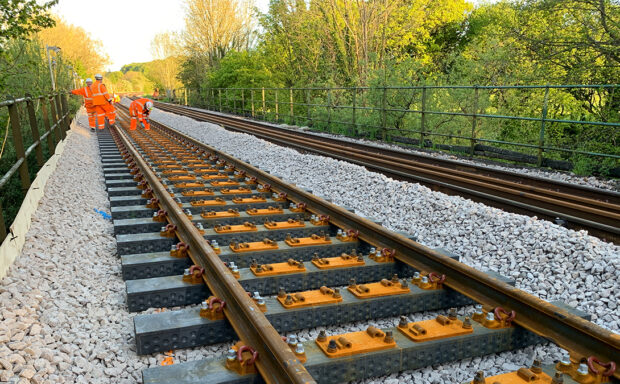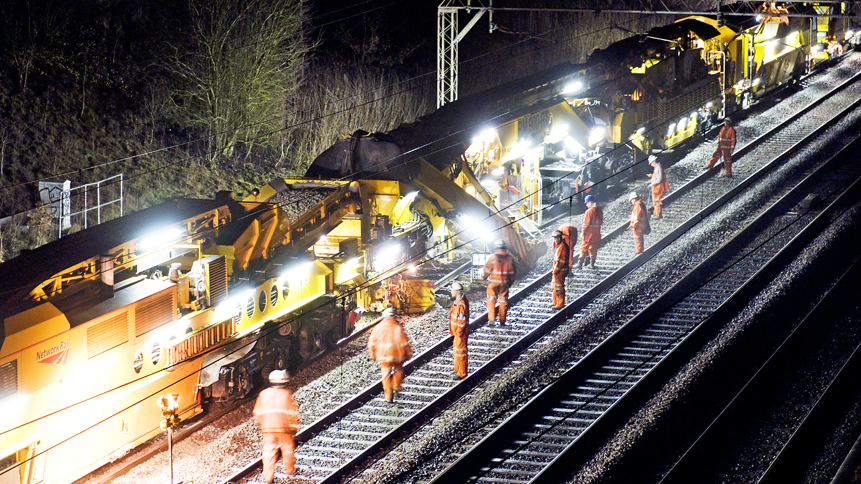We’re sharing how we’re on a journey to a cleaner, greener future as world leaders meet in Scotland to speed up action against climate change.
This week, Glasgow plays host to the 26th UN Climate Change Conference of the Parties (COP26). Caring for our planet is important to our passengers and it’s important to us.
We want to make sure our railway is green, resilient to climate change and able to provide an excellent service for years to come.
Here are four ways we’re doing just that …
Cutting carbon
We’ll cut our carbon to make the railway net-zero emissions by 2045 in Scotland and by 2050 in the rest of Britain.
It’s crucial we do everything we can as a business to improve air quality and minimise our use of fossil fuels. We must also transition to an industry powered by green, renewable, low-carbon energy.
That’s why we’re proud to be the first railway organisation in the world to set ambitious science-based targets to cut carbon emissions and help limit global warming to 1.5°C.
And we’re working with suppliers so that, by 2025, 75% of our suppliers, when measured by their emissions, have science-based targets too.

Biodiversity
As one of Britain’s biggest landowners, we are responsible for looking after plants and wildlife on the railway.
Biodiversity is the variety of plants and animals we see in different habitats. Britain’s railway provides a habitat to many rare species, and we must do everything we can to protect them.
The railway plays a vital role in connecting fragmented wildlife habitats across our countryside, reducing disturbance to our neighbours, and capturing carbon through the network’s six million trees.
That’s why our ambition is to let nature flourish. We’ve committed to continuing to look after plants and wildlife by protecting and maintaining their habitats and creating new ones to increase biodiversity.
Climate change
We prepare for the weather’s impact on our network by forecasting it daily and understanding the projected effects of climate change.
More frequent and more extreme weather conditions caused by climate change will impact our ability to run the railway safely and on time.
For example, heavy rainfall can lead to flooding, stop trains from running, and damage railway infrastructure, causing months of costly repairs. Flooding can lead to landslips, which tend to affect large areas and need substantial engineering work to make the railway safe again. These impacts cause delays to your journeys.
Our ambition is to have prepared the railway infrastructure to minimise the impacts of climate change by 2050.

Reducing waste

We must reduce, re-use and recycle the materials we use to avoid waste.
We have a huge opportunity to contribute to a more circular economy, where we extract fewer resources from the planet, keep materials and resources in circulation and waste to an absolute minimum. This will also help us significantly reduce our carbon emissions.
We use lots of materials to build and maintain the rail network, spending around £7bn a year on our supply chain. Our activities produce a lot of waste; 2.1 million tonnes in 2018 to 2019. We must use less and manage unavoidable waste better.
In our Environmental Sustainability Strategy we’ve committed to reuse, repurpose or redeploy all surplus resources and embed circular economy thinking into the rail industry by 2035. To achieve this, we need to bring the whole industry along with us.
Find out more, including about our Environmental Sustainability Strategy.
Read more:
Summer by rail – boosting economy and environment
Sustainable development at Network Rail
Network Rail sets world-first targets to combat global warming




